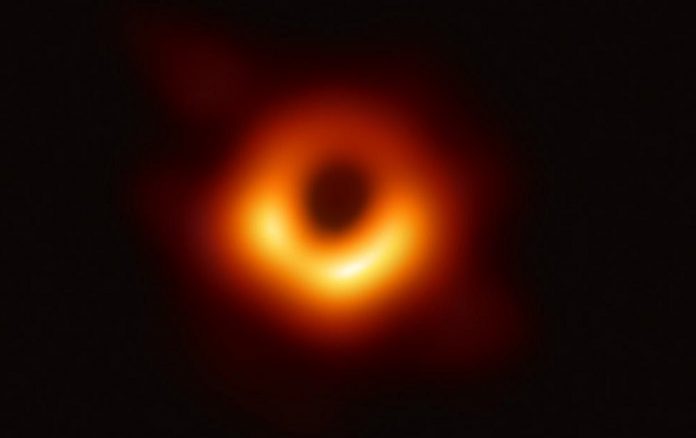
In 2019, the Event Horizon Telescope Collaboration delivered the first image of a black hole, revealing M87*—the supermassive object in the center of the M87 galaxy.
The team has now used the lessons learned last year to analyze the archival data sets from 2009-2013, some of them not published before.
The analysis reveals the behavior of the black hole image across multiple years, indicating persistence of the crescent-like shadow feature, but also variation of its orientation—the crescent appears to be wobbling.
The full results appeared in The Astrophysical Journal.
The Event Horizon Telescope is not one singular telescope, but a global partnership of telescopes—including the UChicago-led South Pole Telescope—which performs synchronized observations using the technique of Very Long Baseline Interferometry.
Together they form a virtual Earth-sized radio dish, providing a uniquely high image resolution.
“The Event Horizon Telescope is giving us a new tool to study black holes and gravity in ways that were never before possible,” said Bradford Benson, an associate professor of astronomy and astrophysics at UChicago.
“As members of the South Pole Telescope (SPT) collaboration and the EHT network, we look forward to contributing to future studies—in particular on Sgr A*, the black hole at the center of the Milky Way galaxy, which we have a unique view of given SPT’s location at the geographical South Pole.”
“With the incredible angular resolution of the Event Horizon Telescope, we could observe a billiard game being played on the Moon and not lose track of the score!” said Maciek Wielgus, an astronomer at Center for Astrophysics | Harvard & Smithsonian, Black Hole Initiative Fellow, and lead author of the new paper.
“Last year we saw an image of the shadow of a black hole, consisting of a bright crescent formed by hot plasma swirling around M87*, and a dark central part, where we expect the event horizon of the black hole to be,” said Wielgus.
“But those results were based only on observations performed throughout a one-week window in April 2017, which is far too short to see a lot of changes.”
But from 2009 to 2013, researchers had taken data of M87* with early prototype arrays before the full complement of telescopes joined. They could tap that data to find out if the crescent size and orientation had changed.
The 2009-2013 observations consist of far less data than the ones performed in 2017, making it impossible to create an image.
Instead, the EHT team used statistical modeling to look at changes in the appearance of M87* over time.
Expanding the analysis to the 2009-2017 observations, scientists have shown that M87* adheres to theoretical expectations. The black hole’s shadow diameter has remained consistent with the prediction of Einstein’s theory of general relativity for a black hole of 6.5 billion solar masses.
But while the crescent diameter remained consistent, the EHT team found that the data were hiding a surprise: The ring is wobbling, and that means big news for scientists. For the first time they can get a glimpse of the dynamical structure of the accretion flow so close to the black hole’s event horizon, in extreme gravity conditions.
Studying this region holds the key to understanding phenomena such as relativistic jet launching, and will allow scientists to formulate new tests of the theory of general relativity.
The gas falling onto a black hole heats up to billions of degrees, ionizes and becomes turbulent in the presence of magnetic fields.
“Because the flow of matter is turbulent, the crescent appears to wobble with time,” said Wielgus.
“Actually, we see quite a lot of variation there, and not all theoretical models of accretion allow for so much wobbling. What it means is that we can start ruling out some of the models based on the observed source dynamics.”
“These early-EHT experiments provide us with a treasure trove of long-term observations that the current EHT, even with its remarkable imaging capability, cannot match,” said Shep Doeleman, the founding director of EHT.
“When we first measured the size of M87 in 2009, we couldn’t have foreseen that it would give us the first glimpse of black hole dynamics. If you want to see a black hole evolve over a decade, there is no substitute for having a decade of data.”
EHT project scientist Geoffrey Bower added: “Monitoring M87* with an expanded EHT array will provide new images and much richer data sets to study the turbulent dynamics.
We are already working on analyzing the data from 2018 observations, obtained with an additional telescope located in Greenland. In 2021 we are planning observations with two more sites, providing extraordinary imaging quality. This is a really exciting time to study black holes!”



